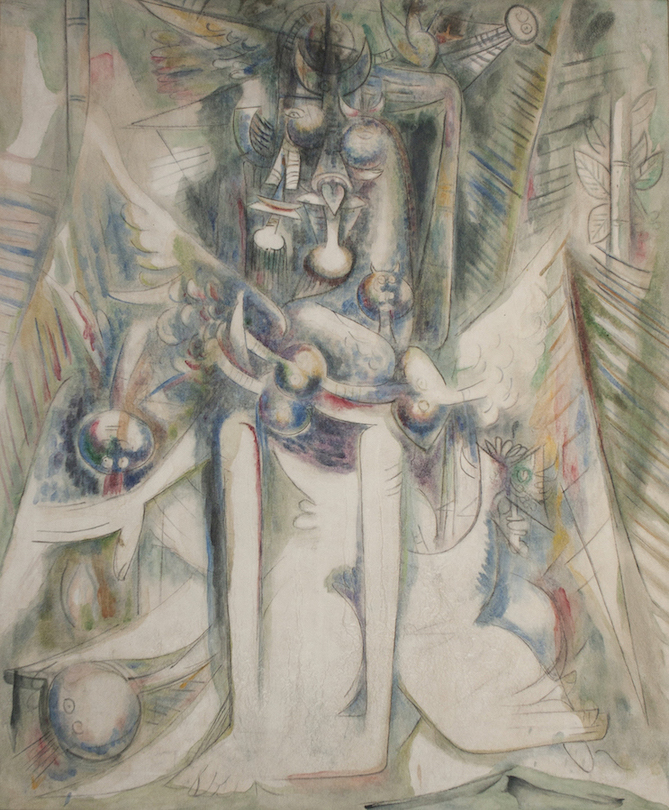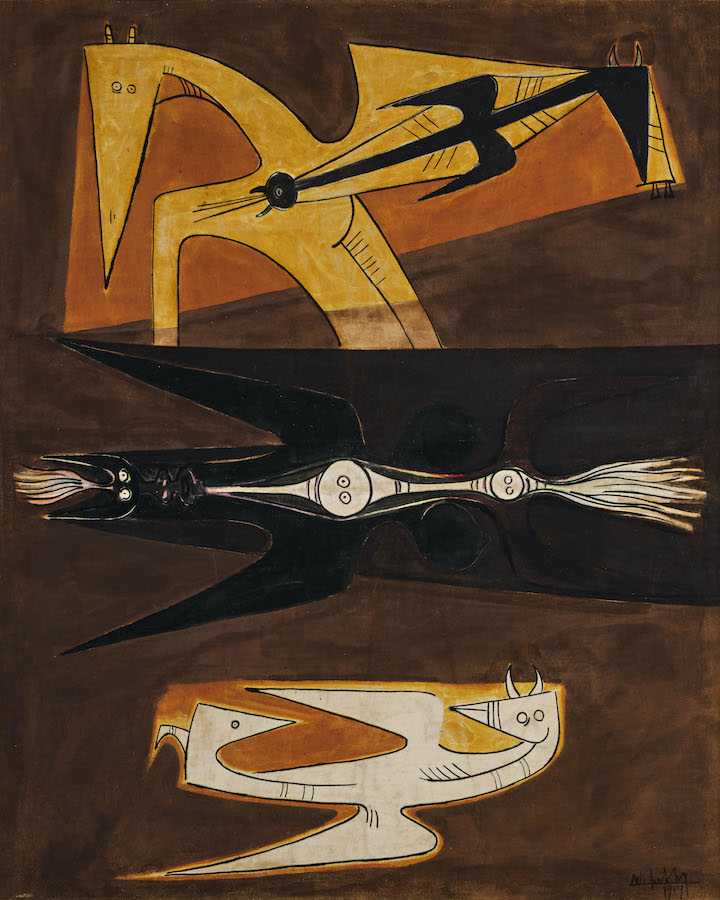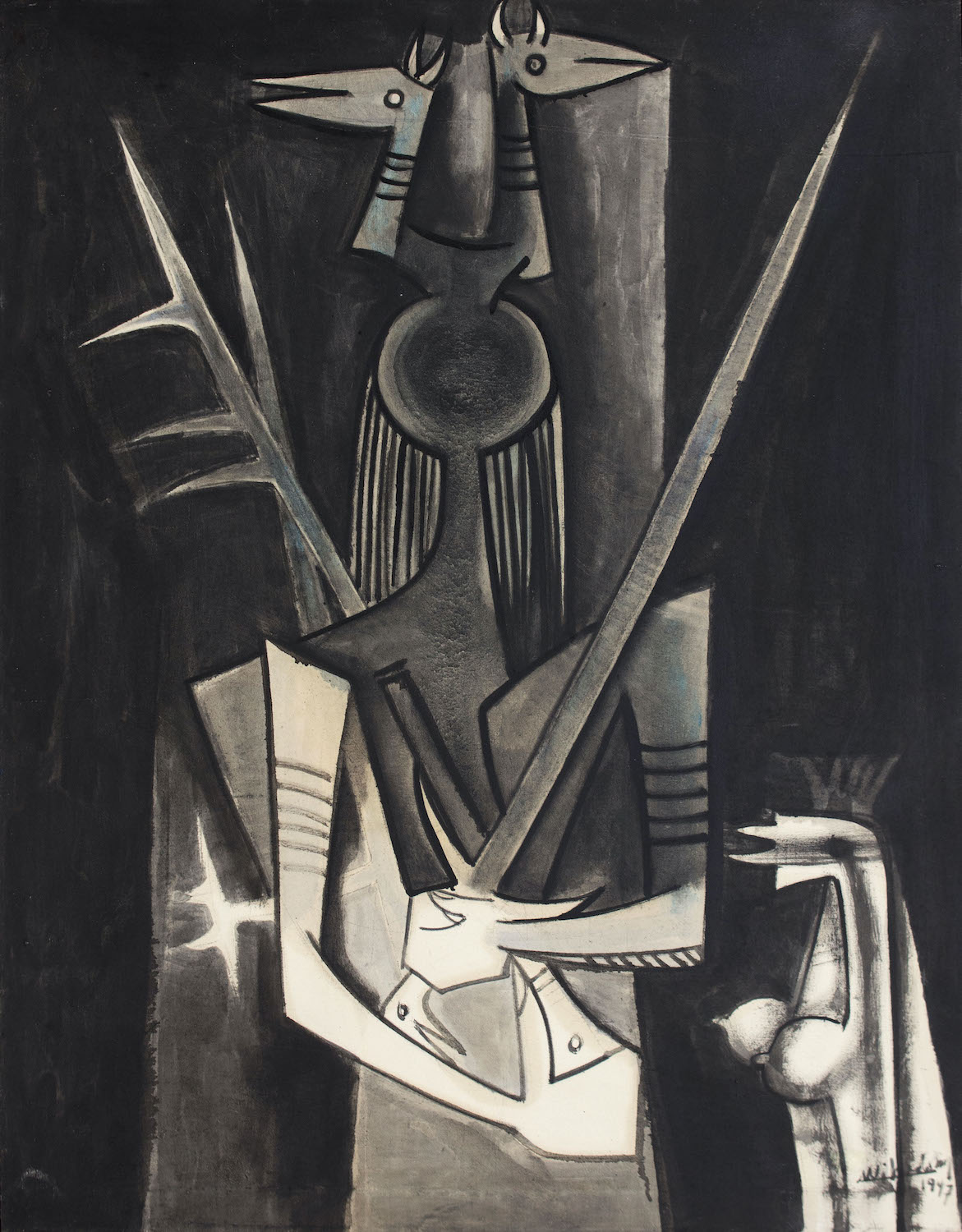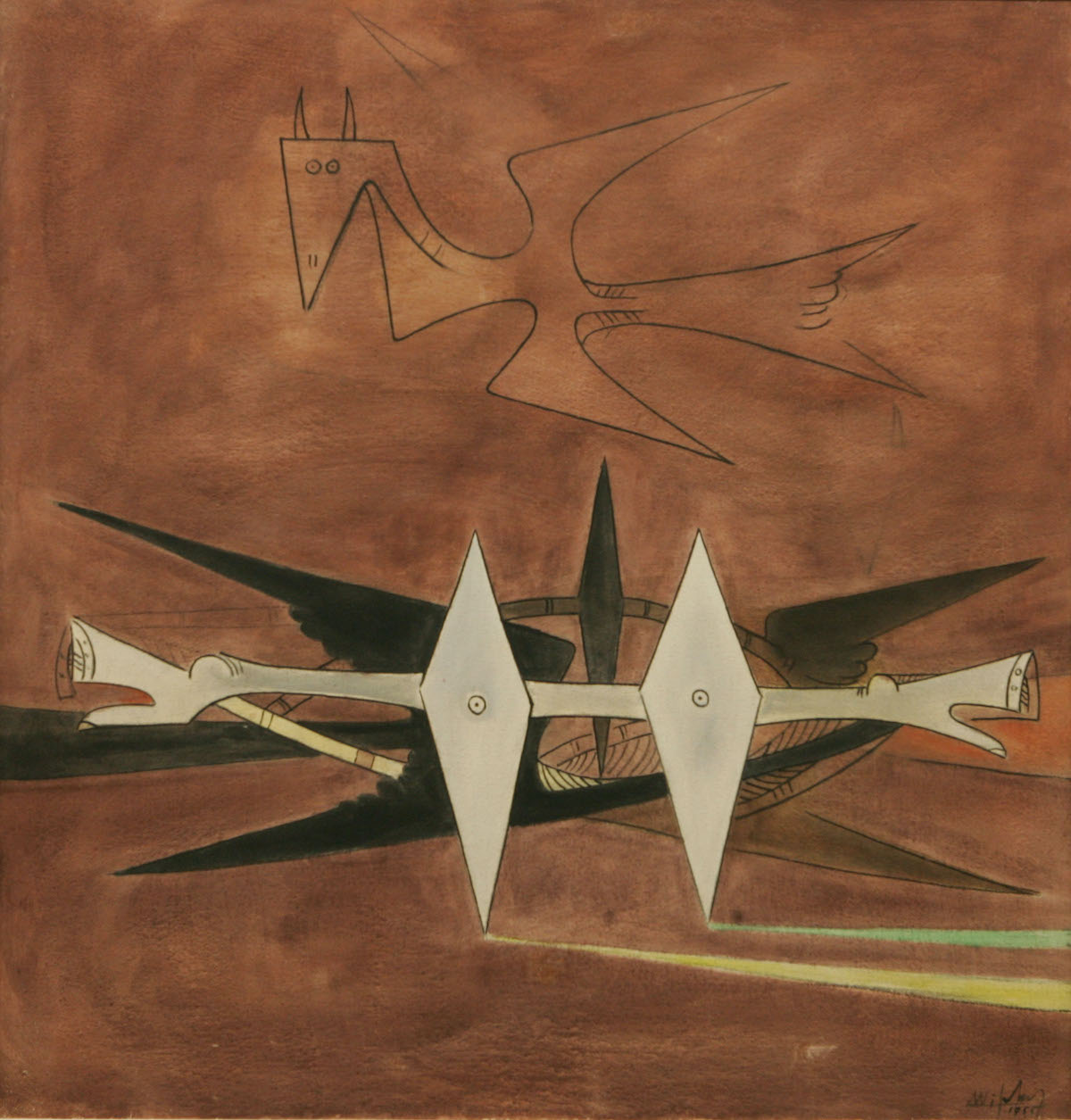Art collector Gary Nader of Gary Nader Art Centre is presenting “Wifredo Lam: The Imagination at Work”, an exhibition of paintings, works on paper, and rarely seen bronze sculptures from Gary Nader Collection. Wifredo Lam is one of the artists whom Gary Nader collects in depth. In collaboration with Pace Gallery, the exhibition from November 9 to December 21 in New York traces the artist’s career from the late 1930s to the 1970s, exploring the influence of his heritage. The exhibition is organized and curated by Nader and Pace’s Senior Director and Curator Andria Hickey with curatorial contributions by Dr. Michaëla Mohrmann, a scholar and curator of Latin American art.
The exhibition features a group of paintings created between 1947 and 1950, a period following Lam’s first visit to Haiti in 1946. These works, which are characterized by their somber, muted palette, were informed by the Vodou ceremonies that the artist encountered in Haiti at a time of political unrest. Also on view in the presentation are Lam’s paintings from the 1950s and 1960s, during which time the artist relocated to France and traveled frequently to Cuba, Venezuela, and Mexico.
LARRY’S LIST highlights 5 must-not-miss artworks from “Wifredo Lam: The Imagination at Work”.
Hermes Trismegiste, 1945
Oil on canvas
63 x 50 in. / 160 x 127 cm.
La Fugue (La Terreur, La Peur dans la nuit), 1949
Oil on canvas
60 3/4 x 49 1/4 in. / 154.3 x 125.1 cm.
The upper and lower figures in this painting display horned birds suspended in mid-flight, meeting the gaze of the viewer with a blank yet penetrating stare. In a 1950 interview, Lam distinctly relates these “diabolical birds,” to a childhood experience watching a bat trapped in his bedroom. For Lam, this formative incident marked the moment of his understanding of human consciousness and the passage of time; its inclusion here heralds a critical moment of transition in his painting as he began to integrate his intricate mystical iconography with symbols of deep personal significance. Moreover, this otherworldly bird evokes layered associations, symbolizing both in Santería and Christian traditions a messenger between spiritual and earthly realms. The central figure evokes similarly complex associations. It presents neither head nor tail, but rather an elongated being, and two black wings darting outward in opposite directions.
Les Oiseaux Voilés, 1945
Oil on canvas
43 5/8 x 49 1/2 in. / 111 x 125.7 cm
In addition to Lam’s monumental works of the Havana years from 1941 to 1952, the artist did an equally significant group of paintings including ‘Les Oiseaux voilés’. This painting more intimate, less totemic may be seen within the context of other works: ‘Personnages’, ‘Le Miel noir’, ‘Charbon de mer’, and ‘Chant des osmoses’, which form a cohesive group of works distinguished by delicately drawn lines and impressionistically dappled paint. The exquisite coloration forms a sense of movement and buoyancy. The birds, never realistically rendered, take on a life of their own.
The familiar motifs allude to beliefs or ceremonies in Afro-Cuban culture, and at the same time, re-create a sense of a lush tropical landscape. The cone-shaped form is a reference to the same shaped headdress of the diablito, or little devil, in Abakua ceremonies while the little round head signifies Elegguá, the guardian of one’s path.
Le Guerrier I [The Warrior] [L’Initiateur], 1947
Oil on canvas
42 1/8 x 33 in. / 107 x 84 cm.
With shades of brown, black, and gray, in conjunction with white, “Le Guerrier I” belongs to a body of work where the artist explored the relations between the metaphysical world and our own. The two-birds-headed armed warrior painted in flat, planar geometrical shapes against a rich dark background evokes the need for independence and autonomy, rejecting any form of predetermination to create a uniquely poetic and magic universe with undeniable power.
It is also a metaphorical approach to Lam’s ancestral inspirations and a rediscovering of his cultural heritage in a creative process well defined as cultural decolonization. The artist succeeded in marrying a visual language drawn from European avant-garde art with his native country’s evocative themes in this two-birds-headed armed warrior.
Here on Earth [Tei sur la terre], 1955
Oil on canvas
41 1/2 x 39 1/4 in. / 105.4 x 99.7 cm.
The present painting, Here on Earth (Ici sur la terre), is an outstanding example of Lam’s subtle, complex mature style. During this period Lam often worked directly on his prepared canvases in charcoal, later reinforcing his compositions in oil but rarely revising them.
The reclining central figure evokes complex associations. It presents neither head nor tail, but rather a single leg with two cloven hooves, and four black wings darting outward in opposite directions. It is adorned and intertwined with iconic recurring motifs of this period: symmetrical diamonds (associated with Abakuá, a secret Afro-Cuban men’s society) and graphic parallel lines evoking sugar cane: a plant emblematic of the Caribbean, heavy with both sweet and sinister associations. These shifting figures remain mysterious, at once occult and organic, belonging neither to the human nor the divine world.
More information: “Wifredo Lam: Imagination at Work” by Pace Gallery and Gary Nader Art Centre, November 10 – December 21, 2021







![LES OISEAUX VOILÉS[1]](https://www.larryslist.com/artmarket/wp-content/uploads/LES-OISEAUX-VOILÉS1.jpg)


